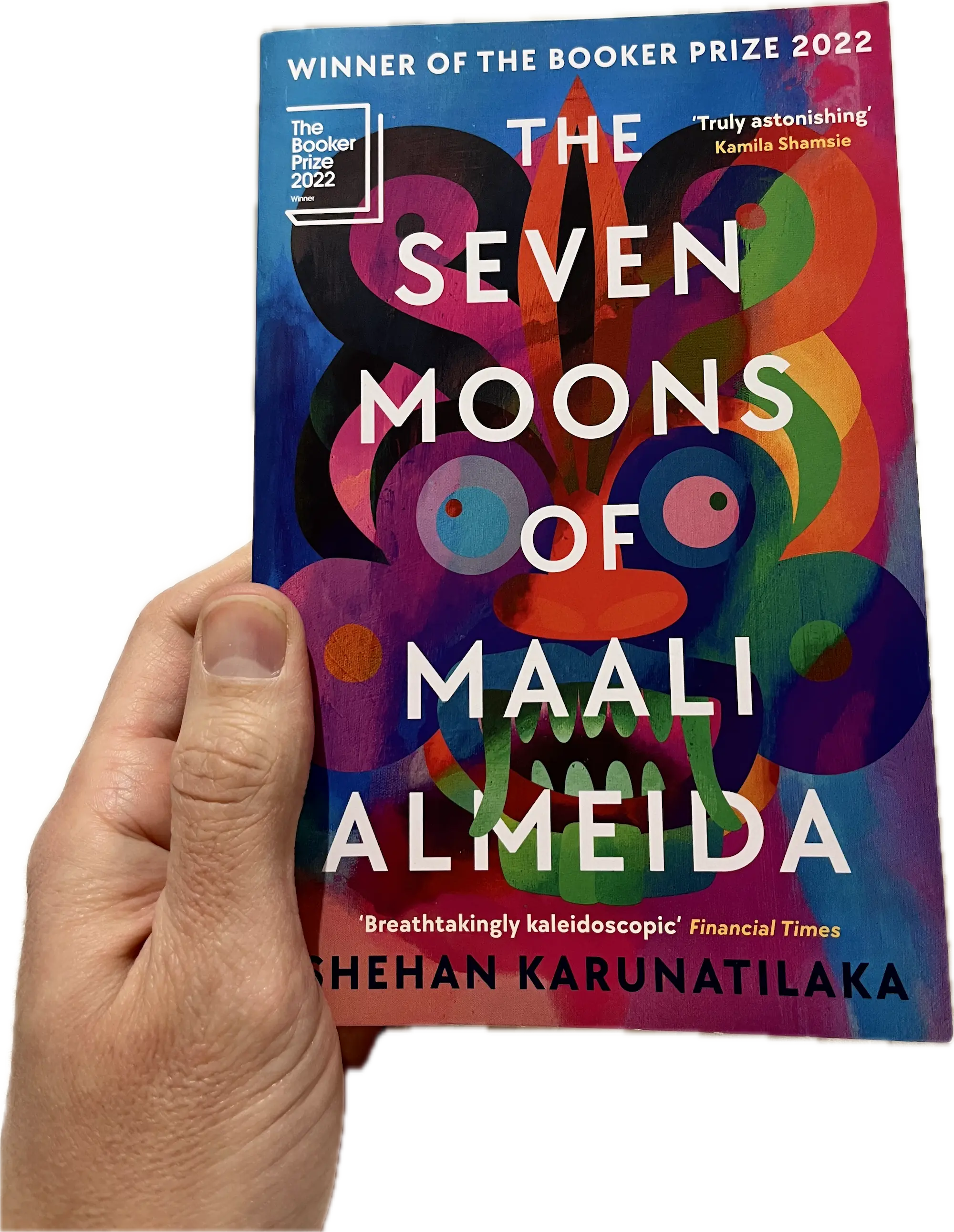The Seven Moons of Maali Almeida (2022)

432pp, Fiction
Notes
2024-03-02
The book follows the recently murdered Maali Almeida (photographer of atrocities, gay, gambling addict) as he stumbles around the In Between trying to finish up his worldly business and find out how he died before his seven moon (i.e. 7 days) are up and his spirit is fair game for the various malign spirits and demons floating round 1990 Colombo. Initially this fact finding provides the forward momentum but after a while Maali figures out a way to weakly influence the real world, suffice it to say his meddling leads to more complications.
&&
Anyway, it took me a while to get into. It's all written in the second person which I found alienating, maybe that's the point? I don't know, but there was a point where it suddenly clicked for me with the realisation that what the book reminds me of most, in terms of its world building and its writing (esp wrt pov) was a golden age Lucasarts point and click adventure. This is a high recomendation. There's a playfulness and humor aswell as deeply felt peril, I was fully on board and finished the last quarter in a single draft.
&&
Also, Shehan Karunatilaka absolutely nails the ending. Spoilers?: There were a couple of bits in the last section of the book that I found deeply affecting:
1st. The choice Maali is offered on entering the light* seems real and meaningful and his choice feels right
2nd. The fate of the posthumous exhibition of Maali's most treasured photography that he manages to shunt into being: This is his main motivation through the book. He's convinced that his pictures, specifically photo's which he didn't dare to publish whilst walking around the streets of living Colombo, will have an impact on the world, will change things, will bring people to justice. He risks his friends safety and his own immortal soul to make it happen, and then, nothing much. People see the exhibition a few compromised individulas come and remove pictures but essentially nothing changes. In the end the politically explosive photos have all been taken down by those who don't want them seen, no detonations have occured. All that endures are landscapes, pictures of friends and animals.
&&
This book has been put in the "magical realism" marketing category but I don't think it belongs there really. Mainly I think this because I really enjoyed it but aslo because the approach to the "magical" part has more in common with sci-fi /fatasy than the alegory heavy magical realism. It treats the fantastic as interesting to think and write about in and of itself rather than merely for it's alegorical power.
*The idea of deliberately having to choose going into the light to leave limbo is one of a few explicit nods to Kurt Vonnegut but this book struck me as more hopeful? or at least more at peace than anything by Vonnegut.